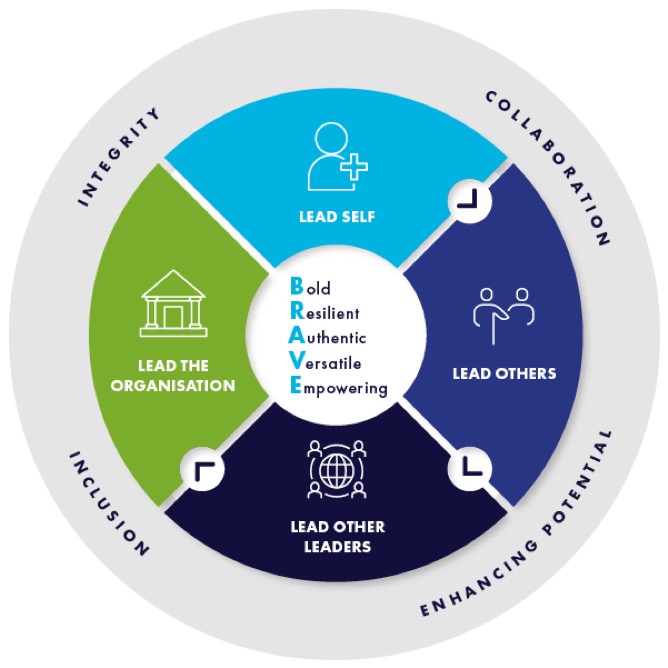
The BRAVE framework has been designed to support the embedding of five key attributes , Bold, Resilient, Authentic, Versatile & Empowering into the leadership culture across Ulster University. To support an understanding of what BRAVE leadership may look like in practice, examples of observable capabilities and reflective behaviours have been outlined for each attribute.
The framework demonstrates a cumulative journey of development across four levels of leadership. In contrast to using a strict hierarchical approach, the levels presented are flexible and centered around the employees impact in the organisation (based on increasing role, scope, complexity, and influence).
It reflects current beliefs about effective leadership and reinforces our organisational values and culture.
Leading at all levels enables a collective & systematic approach to enhancing leadership potential and culture across Ulster University. It recognises that leadership capabilities look different depending on the individual’s role.
 Lead Self
Lead Self
A foundation for all leaders promoting the importance of living the values and taking responsibility for leading self as a leader.
 Lead Others
Lead Others
The leaders of individual employees. Often focused on the frontline of service provision, teaching delivery, or research endeavour. These leaders are pivotal in getting the work done through teams.
 Lead Other Leaders
Lead Other Leaders
Experienced employees who lead other managers or leaders. The focus to convert strategy to operational requirements, and manage outcomes through multiple layers of complexity.
 Lead the Organisation
Lead the Organisation
Senior and executive leaders in the organisation responsible for setting the vision for the University and providing the resources to build toward the future.
How might the Framework be used?
The framework will underpin our key people processes and provide colleagues with a common language with which to articulate and develop the leadership culture at Ulster University.
The framework may be applied in several ways including:
- Informing the content of our university’s leadership development provision;
- Encouraging colleagues to reflect on their contribution and development needs ahead of performance and development conversations;
- Enabling quality conversations between staff and their line managers;
- Informing our recruitment and selection processes;
- Helping colleagues to think about their leadership skills when applying for a new role or a promotion.